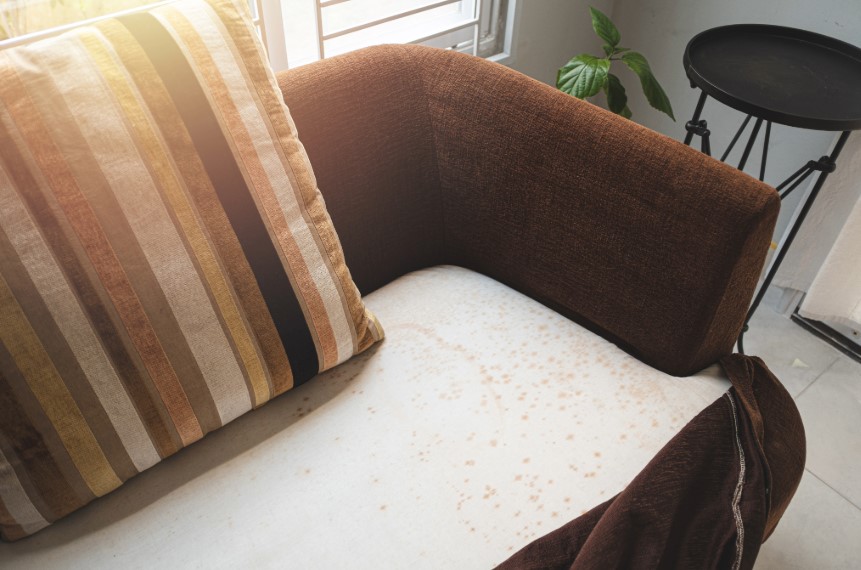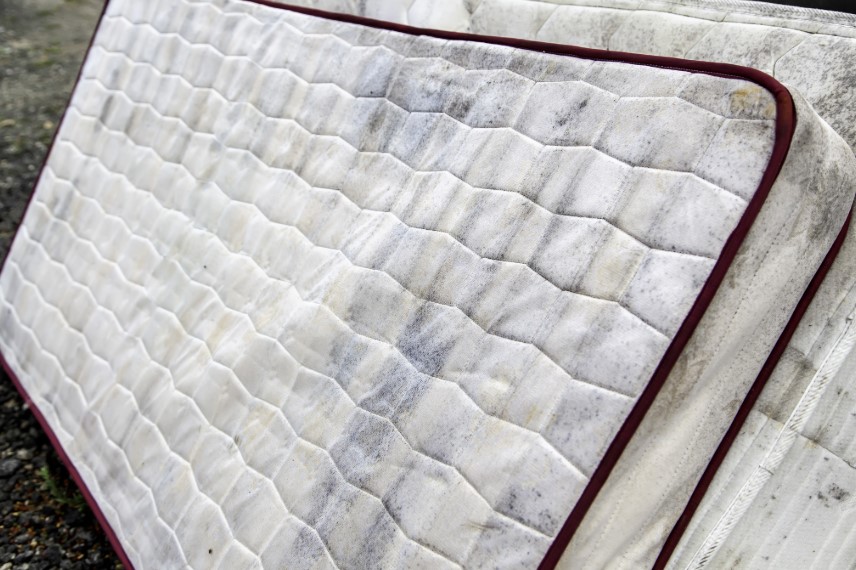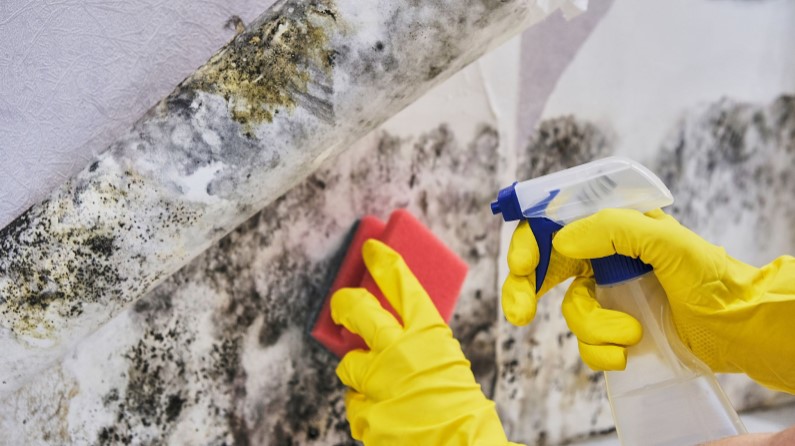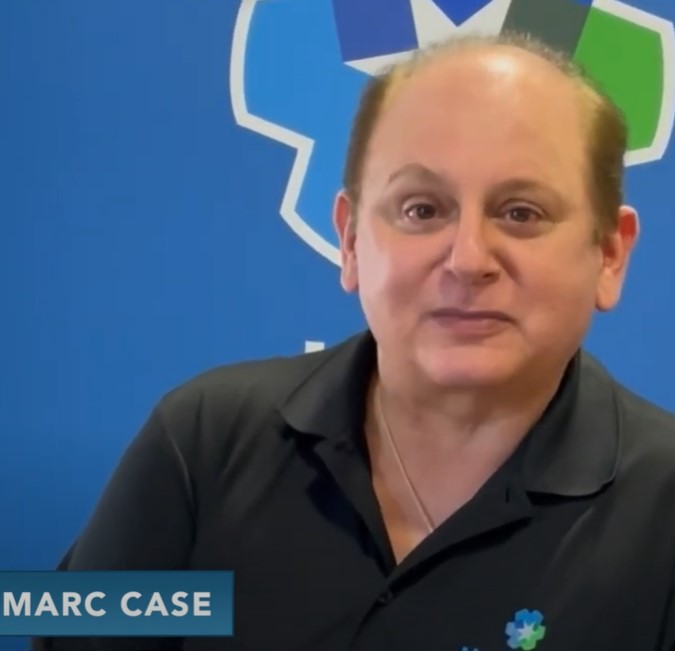
Contact Us For Mold Removal
Mold is a common household problem that can be found on various surfaces, including furniture. It is caused by various types of fungi that thrive in warm and damp environments. Not only can mold cause damage to your furniture, but it can also pose serious health risks for you and your family.
We are often asked for tips on how to identify mold growth on various types of furniture including upholstered chairs, wooden sets, or leather couches. Once you can tell if your furniture has mold, the next question that comes up is how to safely treat and prevent it.
Here are our recommendations to ensure that your furniture is clean, safe, and lasts you a long time.
Is Mold Commonly Found on Furniture?
Yes, mold can commonly be found on furniture, particularly in damp or humid environments like New Jersey. Here are some statistics and information about mold growth on different types of furniture:
Upholstered Furniture (Couches, Chairs)
According to the Environmental Protection Agency (EPA), upholstered furniture is one of the most common places to find mold growth in homes. The fabric and padding in upholstered furniture can absorb moisture, providing an ideal environment for mold to thrive.
There are more than 200 known varieties of indoor mold. They thrive in damp, humid conditions and can spread quickly across a wide range of surfaces, including fabrics like those used on upholstered furniture. The surfaces that mold grows on are destroyed by them.
Asthma, skin responses, and chronic fatigue syndrome are just a few of the health issues for which mold exposure is now linked, according to scientific study. In order to maintain the health of your family and your house, mold growth must be controlled.
Wooden Furniture (Dressers, Cabinets, Armoires)
According to the U.S. Department of Agriculture (USDA), certain molds and mildew fungi can form on the surface of wood, producing “cottony” white, gray, black or colored growths. These surface molds and mildews differ from wood-decaying fungi that attack the internal wood structure.
While molds and mildews don’t reduce the strength of the wood itself, they are objectionable due to their appearance and indicate conditions that could also allow wood-decaying fungi to grow. Molds need a wood surface moisture content of around 20% to begin growing.
Mold and mildew growth on wooden furniture like dressers, cabinets and armoires is especially common in humid environments or if the furniture has gotten wet from leaks or spills. The USDA states that annual treatment with a water-repellent wood preservative can help reduce surface mold and mildew issues on wood products.
If present, surface molds can sometimes be removed by scrubbing with a bleach/water solution and allowing the wood to fully dry before refinishing. However, severe cases may require sanding before retreating with a preservative to restore the wood’s appearance.
Mattresses
A study by Robert G Hamilton, PhD published on uptodate.com found that up to 35% of household mattresses have detectable levels of mold. Mattresses can trap moisture from sweat, spills, and humidity, leading to mold growth.
Additionally, a 2021 study published in the journal Chest highlights that mold growth in foam pillows and mattresses may be a previously unrecognized cause of hypersensitivity pneumonitis (HP).
The study reported two cases of HP associated with exposure to mold in foam pillows and a mattress. HP is an inflammatory and/or fibrotic lung disease typically resulting from an immune reaction to inhaled antigens in susceptible individuals. Given the high prevalence of foam materials used in pillows and mattresses, the authors suggest mold growth in these foam bedding items could explain many cases of HP where no inciting antigen was previously identified (up to 60% of HP cases).

The authors emphasize that early identification and avoidance of moldy foam pillows and mattresses may prevent progression of HP to end-stage pulmonary fibrosis and death. As mattresses provide an ideal environment to trap moisture and allow mold proliferation, routine inspection and replacement of moldy mattresses and pillows is recommended to reduce this newly recognized risk factor for developing HP.
Leather Furniture:
leather furniture is susceptible to mold growth, particularly in humid environments or if the leather has been damaged or scratched, allowing moisture to penetrate. Prolonged exposure to high humidity can promote mold and bacteria growth on leather goods.
As explained by moisture measurement company Delmhorst, moisture issues can negatively impact leather in several ways. Excess moisture allows mold and bacteria to proliferate on the organic leather material, potentially causing rot and degradation over time. Humidity changes during the leather tanning process can also significantly alter the tensile strength of the finished product.
Moisture absorption can cause leather to swell slightly, only to shrink again as it dries, potentially leading to defects or a smaller usable size than expected. To prevent issues, many manufacturers check moisture levels in leather before selling to ensure it will not shrink further.
For leather furniture owners, it is important to control humidity levels and fix any leaks, spills or condensation issues that could wet the leather and allow mold growth. Damaged or scratched leather furniture is particularly prone, as the moisture penetration allows mold spores to take hold inside the material. Routine cleaning and maintaining low indoor humidity can help prevent unsightly and damaging mold issues on valued leather furniture pieces.
It’s important to note that mold can grow on any surface that provides organic material and moisture, including furniture. Regularly inspecting and cleaning furniture, controlling indoor humidity levels, and addressing any water damage promptly can help prevent or minimize mold growth on furniture in your home.
How to Identify Mold On Furniture
There are many signs that can indicate the presence of mold on furniture. And these or any type of material, whether it’s wood, fabric, or leather. Some common signs to look out for include:
- Visible mold growth: As mentioned earlier, mold can come in a variety of colors and shapes. If you see any strange spots or patches on your furniture, it could be a sign of mold.
- Musty odor: Mold has a distinct musty smell that is often described as earthy or damp. If you notice a musty odor coming from your furniture, it could be an indication of mold growth.
- Discoloration: Mold can cause discoloration on furniture, especially on wooden surfaces. This can appear as black or green spots and can also cause the wood to become discolored and warped.
- Water damage: If your furniture has been exposed to water or high levels of humidity, it can create the perfect environment for mold growth. Look out for any signs of water damage such as stains, warping, or soft spots on the furniture.
- Allergic reactions: As mentioned earlier, exposure to mold can cause allergic reactions in some people. If you start experiencing respiratory issues, coughing, sneezing, or skin irritation when in close proximity to a particular piece of furniture, it could be due to mold growth.
If you notice any of these signs on your furniture, it’s important to take action immediately. Mold can spread quickly and cause further damage if left untreated.
Calling Professionals To Remove Mold from Furniture
While visible mold on furniture may tempt you to try cleaning it yourself, this can pose serious health risks. Mold exposure can lead to allergic reactions, asthma attacks, respiratory issues and other problems, especially for those with weakened immune systems according to the CDC. Disturbing mold colonies improperly can release thousands of spores into the air you breathe.
For these reasons, it is strongly recommended to call MasterTech Environmental, an experienced New Jersey professional mold remediation company, to safely and effectively remove mold from furniture and prevent spreading spores throughout your home. Our team has in-depth training on properly containing and eliminating mold infestations on various materials including delicate fabrics, upholstery, wood and more.
Simply cleaning visible mold is often just a temporary solution, as the underlying moisture issue allowing mold to grow must also be addressed. MasterTech’s comprehensive approach doesn’t just remove current mold, but also identifies and can advise on how to remediate the sources of dampness or humidity that were fueling the mold’s growth. This prevents the frustrating cycle of mold returning soon after it has been cleaned.
Attempting DIY mold removal also risks using improper techniques that can permanently damage clothing, furniture and other belongings by grinding mold deeper into materials. Save yourself this hassle and potential health hazards by calling MasterTech’s trained professionals at the first signs of furniture mold. Our advanced equipment and expertise provide a safe, effective solution to return your home to a mold-free environment.
Dispose of contaminated items
When cleaning your moldy furniture, examine other items that may have been affected. Mold spores become airborne and spread throughout your environment. Items that may have been contaminated by mold might include clothing, curtains, or other porous materials that cannot be easily cleaned.
Dispose of items that won’t be missed, or that can be easily replaced, If you suspect that it has been contaminated with mold. Mold spores can be difficult to remove completely, and there is a risk of cross-contamination if you try to clean them. It’s also important to properly dispose of any items that have been in prolonged contact with mold, as they may contain higher levels of mold spores.
When disposing of contaminated items, it’s important to take precautions to avoid spreading mold spores. This can include wrapping the items in plastic bags and sealing them tightly before disposing of them. It’s also important to wear protective gear, such as gloves and a mask, to avoid inhaling any mold spores.

Prevent future mold growth
So now that you’ve taken care of the current mold growth in your home, how do you prevent it from happening again in the future? The key is to keep your home dry and well-ventilated.
Regularly checking and controlling the humidity levels in your home is crucial for preventing mold growth. Ideally, indoor humidity levels should be kept below 60%. You can use a dehumidifier to help keep humidity levels in check, especially in areas like basements and bathrooms where moisture tends to accumulate.
Proper ventilation is also important for preventing mold growth. Make sure that your home has adequate ventilation, especially in areas prone to moisture buildup. This can include using exhaust fans in the bathroom and kitchen, as well as opening windows regularly to let fresh air in.
Fixing any leaks or sources of water intrusion is also essential for preventing mold growth. Be sure to regularly check for and address any leaks in plumbing, roofing, or windows that may be causing moisture buildup. Additionally, properly maintaining your home’s gutters and downspouts can help prevent water from seeping into your home’s foundation.
Regularly cleaning and inspecting areas that are prone to moisture, such as bathrooms and basements, can also help prevent mold growth. Make sure to clean up any spills or leaks immediately and regularly check for signs of water damage.
So now you know how to prevent future mold growth, but what do you do if it does happen again? If you notice any signs of mold growth, such as a musty odor or visible spots on walls or ceilings, act quickly and address the issue before it becomes a bigger problem. This can include using natural cleaners like vinegar or hydrogen peroxide to remove small patches of mold, or hiring a professional remediation service like MasterTech Environmental for larger infestations.
Does Insurance Cover Mold Remediation?
Mold growth in homes can be a serious issue, not only for the health of those living in the home but also for its structural integrity. As a homeowner, you may be wondering if your insurance policy covers mold remediation and what steps you should take if mold is found in your home.
The answer to whether or not insurance covers mold remediation can vary depending on your specific policy and the cause of the mold growth. In general, most insurance policies do not cover mold caused by flood damage or neglect. This means that if you have a leaky roof that has been ignored for months and has resulted in mold growth, your insurance may not cover the cost of remediation.
However, there are some situations where mold remediation may be covered by insurance. For example, if you have a sudden and accidental water damage event, such as a burst pipe or malfunctioning appliance, your insurance policy may cover the cost of mold remediation.
It’s important to review your insurance policy and understand what is covered in terms of mold remediation. If you live in an area prone to natural disasters or flooding, it may be worth considering adding additional coverage for mold remediation.
Mistakes to Avoid When Dealing with Mold
While insurance coverage for mold remediation can provide financial relief, it’s important to take preventative measures and avoid common mistakes when dealing with mold in your home. Here are some mistakes to avoid:
- Ignoring the problem: As mentioned earlier, ignoring small patches of mold can lead to bigger issues down the line. It’s important to address mold growth as soon as it’s discovered.
- Not fixing the source of moisture: Mold needs moisture to grow, so simply removing visible mold without addressing the source of the moisture will only result in recurring mold growth.
- Attempting to remove mold yourself: While small patches of mold can be cleaned with household cleaners, larger areas of mold should be handled by professionals. Improper removal can release mold spores into the air, causing potential health risks.
- Not wearing protective gear: When dealing with mold, it’s important to wear gloves, goggles, and a mask to protect yourself from inhaling or coming into contact with mold spores.
- Improperly ventilating the affected area: Proper ventilation is crucial when dealing with mold. Opening windows and using fans can help to circulate fresh air and prevent the spread of spores.
It’s also important to research and follow proper safety procedures when removing mold, such as sealing off the affected area and properly disposing of contaminated materials.
Is Professional or DIY Mold Remediation the Better Option?
Thinking about saving money by trying to remove mold yourself instead of hiring a professional remediation company? It may seem like a cost-effective option. It’s important to consider the potential risks involved.
Professional mold remediation companies have specialized equipment and expertise that allows them to effectively identify and remove all traces of mold. They also have access to specialized cleaners and techniques that may not be readily available to the average homeowner.
Though DIY mold removal can save money in upfront costs, it may not fully address the root cause of the mold growth and could lead to recurring issues. It also requires a significant amount of time and effort, as well as proper safety precautions to avoid potential health risks.
Ultimately, the decision between professional and DIY mold remediation depends on the severity of the mold infestation and individual circumstances. It’s important to carefully weigh the pros and cons, and if in doubt, consult with a professional for guidance. The most important thing is to make sure that mold remediation is done thoroughly and effectively to protect the health of yourself and your family. It’s always better to be cautious and seek professional help when dealing with mold growth.
Taking The Right Precautions For Furniture Mold Remediation
It is possible to effectively remove mold from your furniture and your New Jersey home. Whether you choose to tackle it yourself or seek professional help, the most important thing is to address the issue promptly and thoroughly to protect the health and safety of your household.
Remember, prevention is key in avoiding future mold problems. Stay vigilant and address any potential sources of moisture to keep your home mold-free. If you do encounter mold growth, don’t panic. Follow proper precautions and guidelines for safe removal, or consult with a professional for assistance.
Call 732-716-2384 or Contact Us for a New Jersey Professional Mold Inspection today
FAQs
Can I use bleach to remove mold?
Bleach may be effective in killing visible mold, but it does not fully address the underlying issue and can actually worsen the problem. Professional cleaners have specialized products that target and eliminate mold at its source.
How do I know if I need professional mold remediation?
If you have a small patch of visible mold, you may be able to tackle it yourself. However, if the mold covers a large area (more than 10 square feet) or is accompanied by a musty odor or water damage, it’s best to consult with a professional for proper evaluation and remediation.
How can I prevent mold growth in the future?
Regularly inspecting for leaks and moisture, controlling humidity levels, and promptly addressing any water issues can help prevent mold growth. It’s also important to properly ventilate areas prone to moisture, such as bathrooms and kitchens. Additionally, keeping a clean and clutter-free environment can prevent mold from thriving in hidden spaces.

